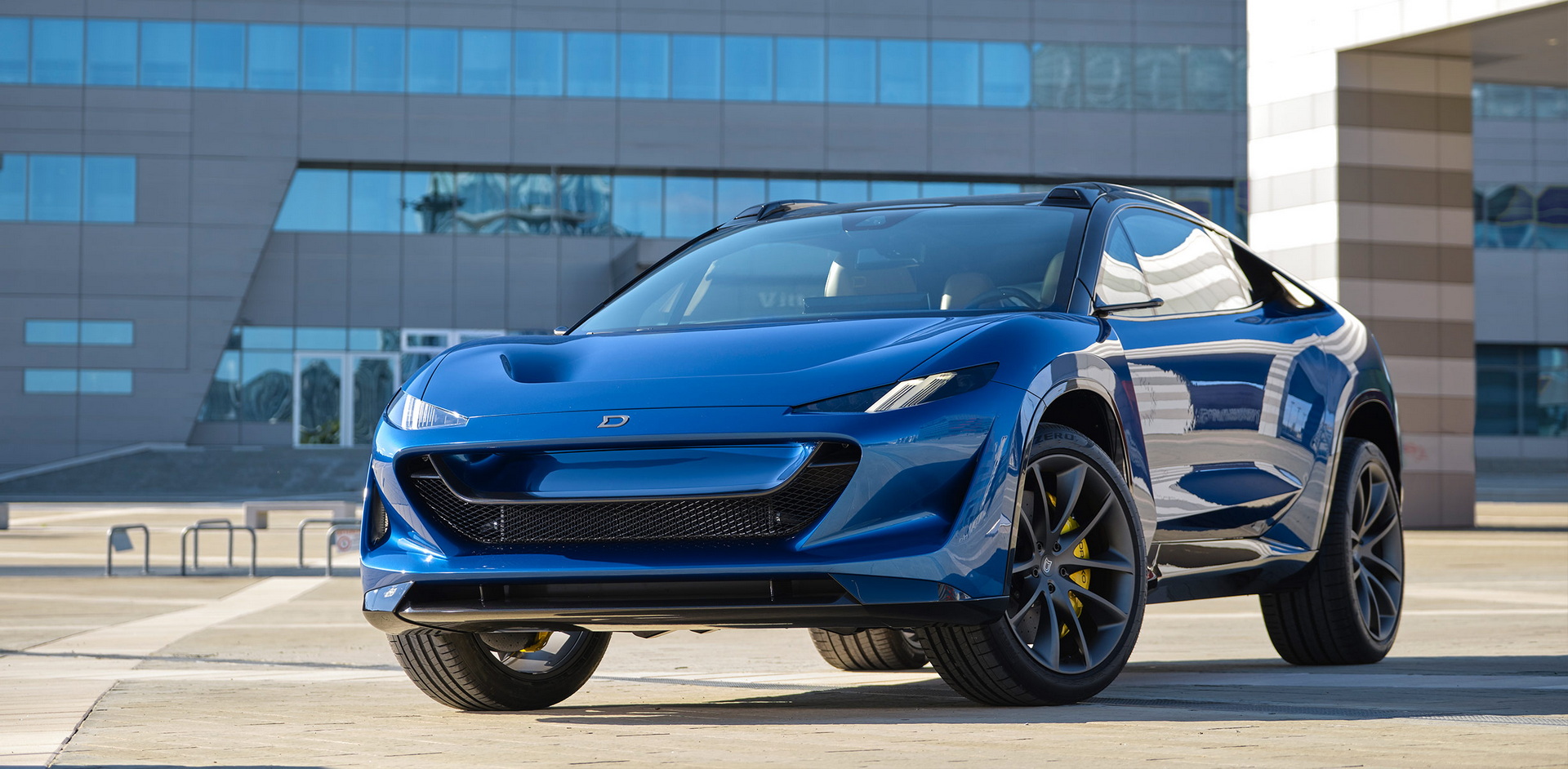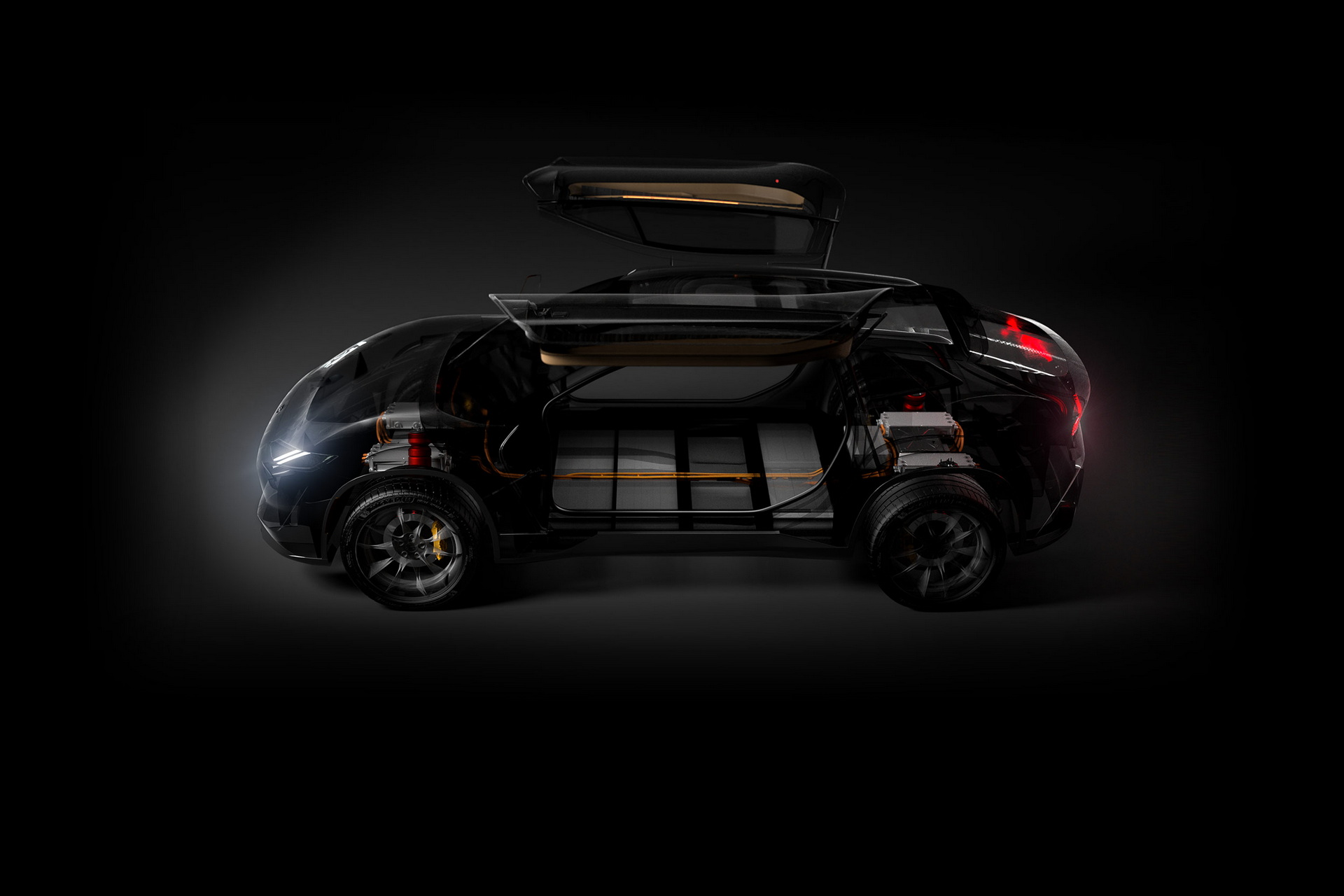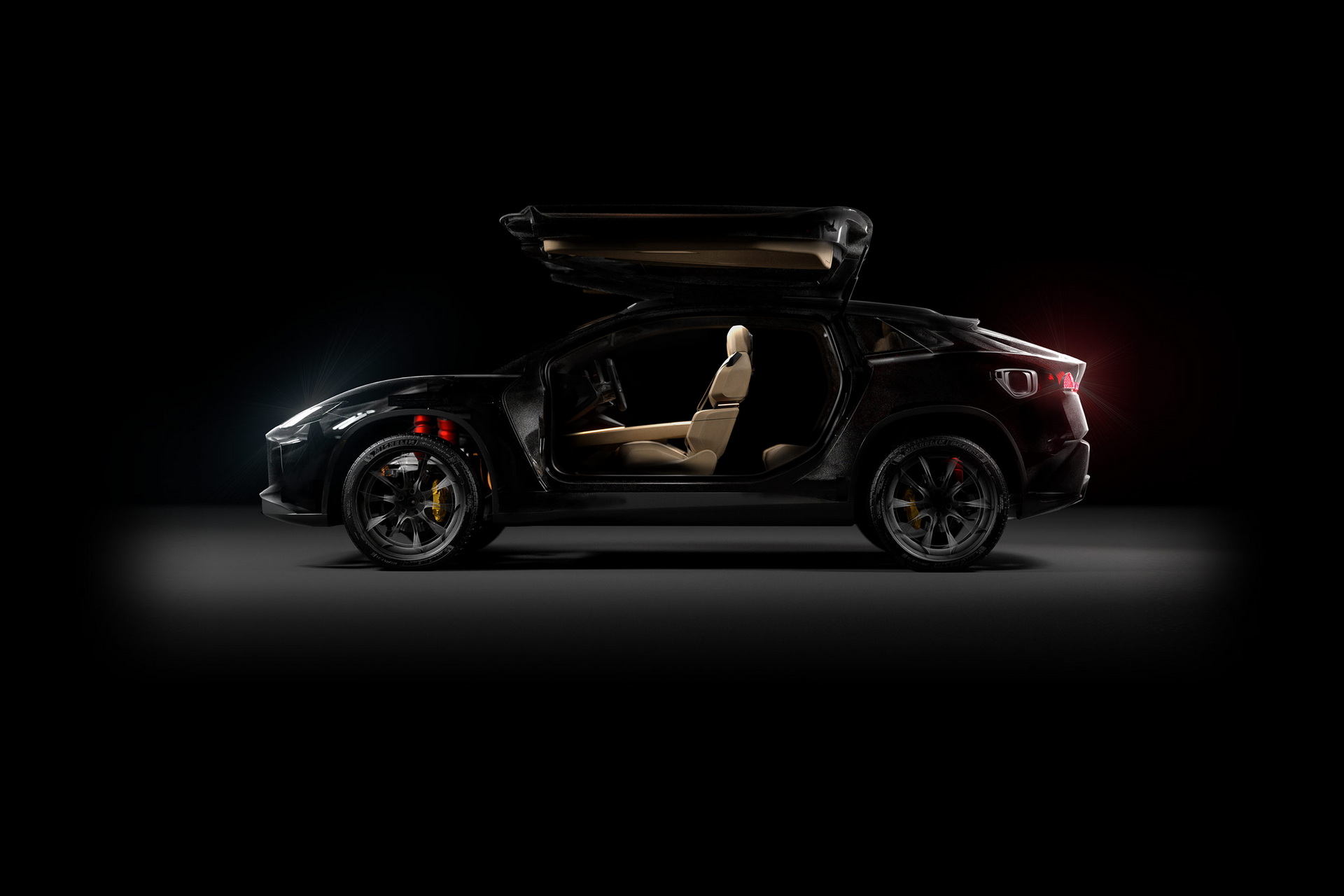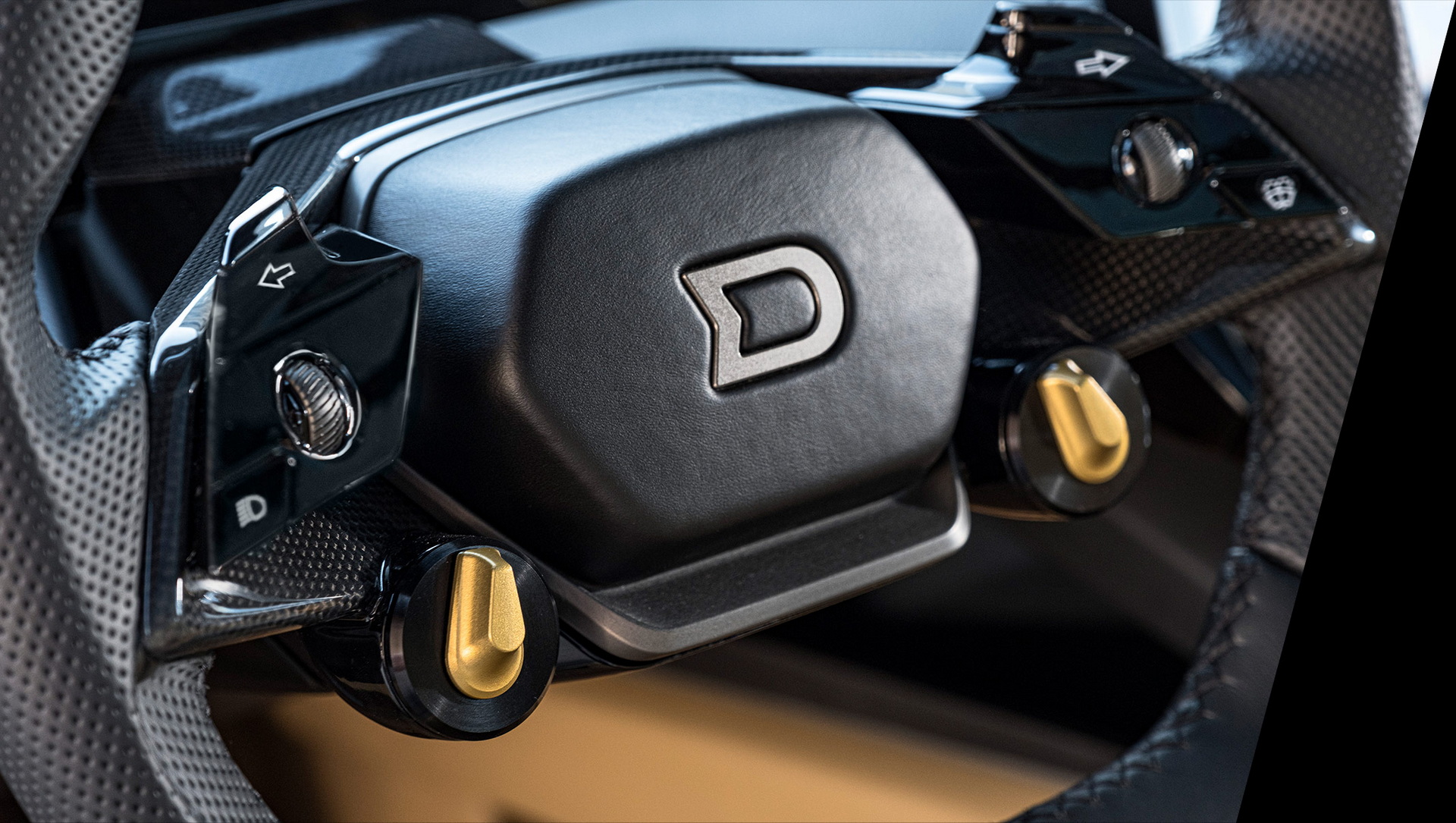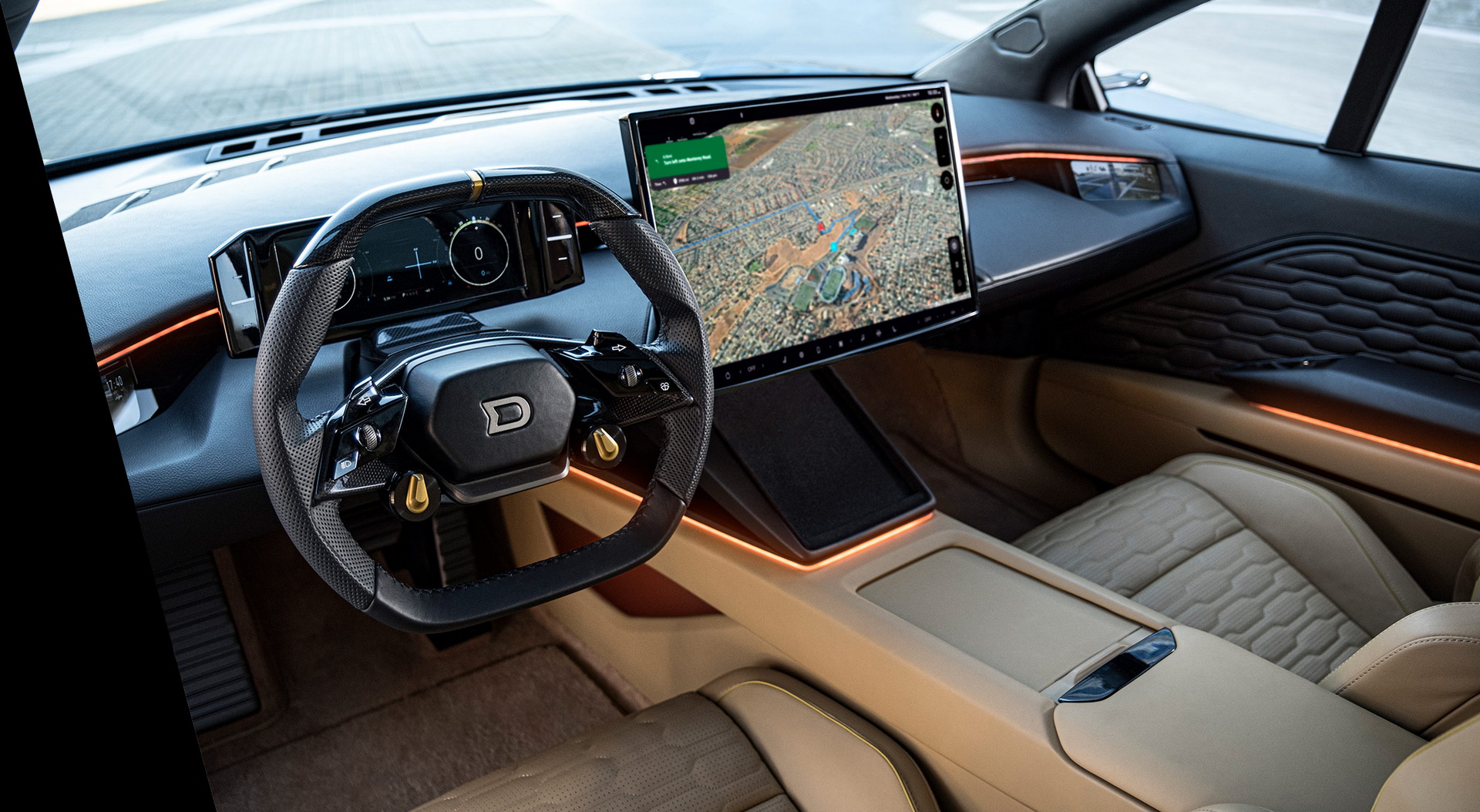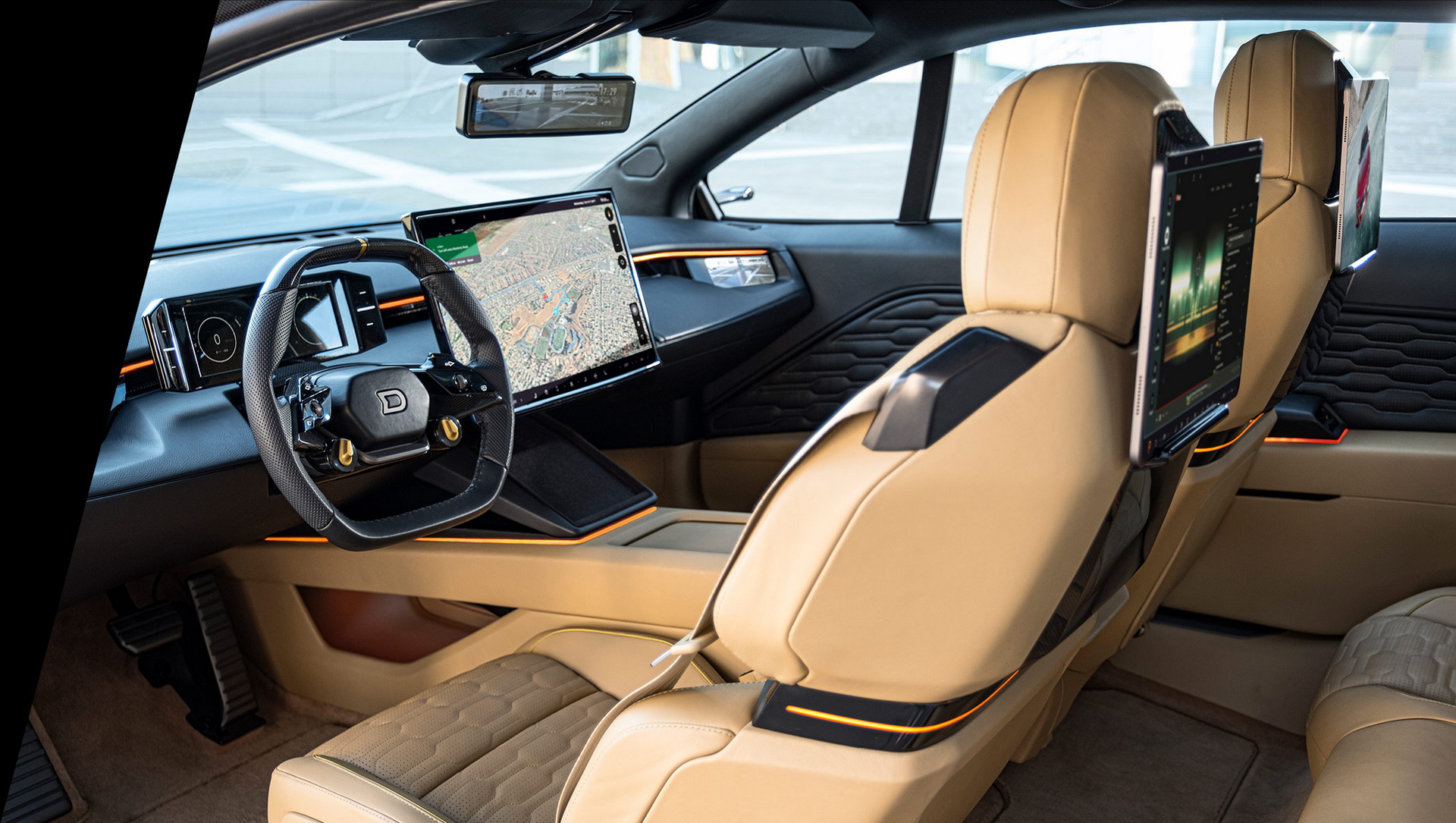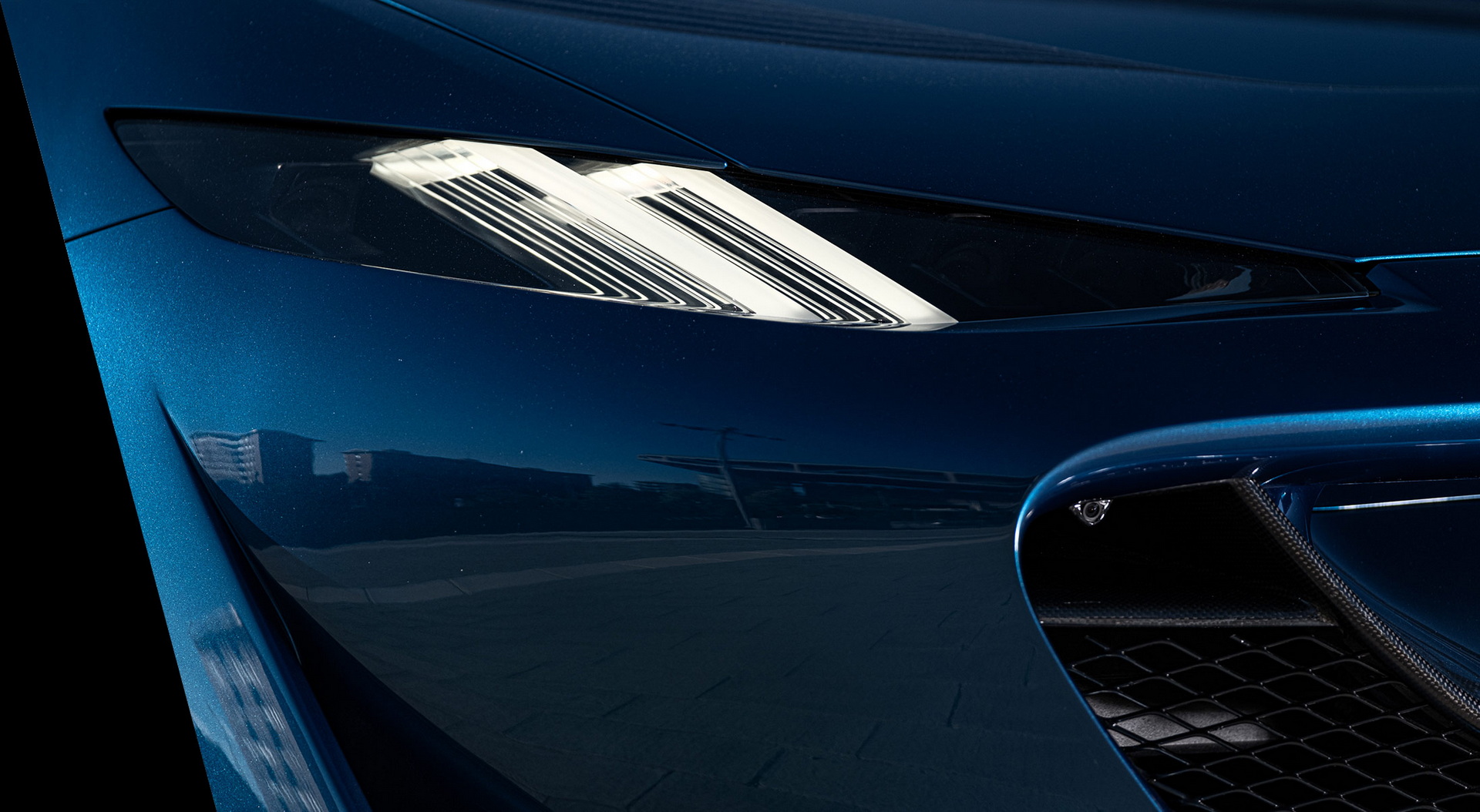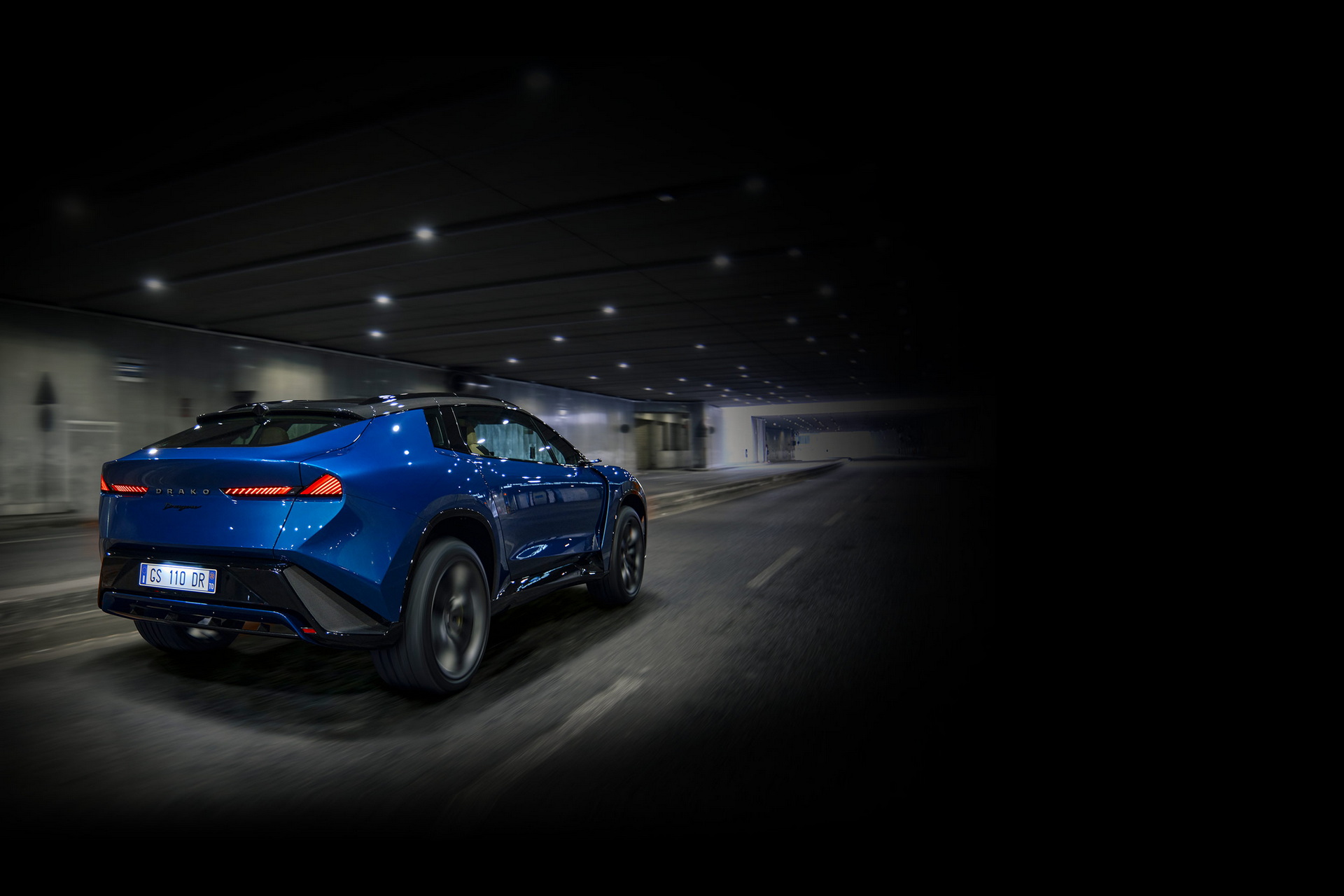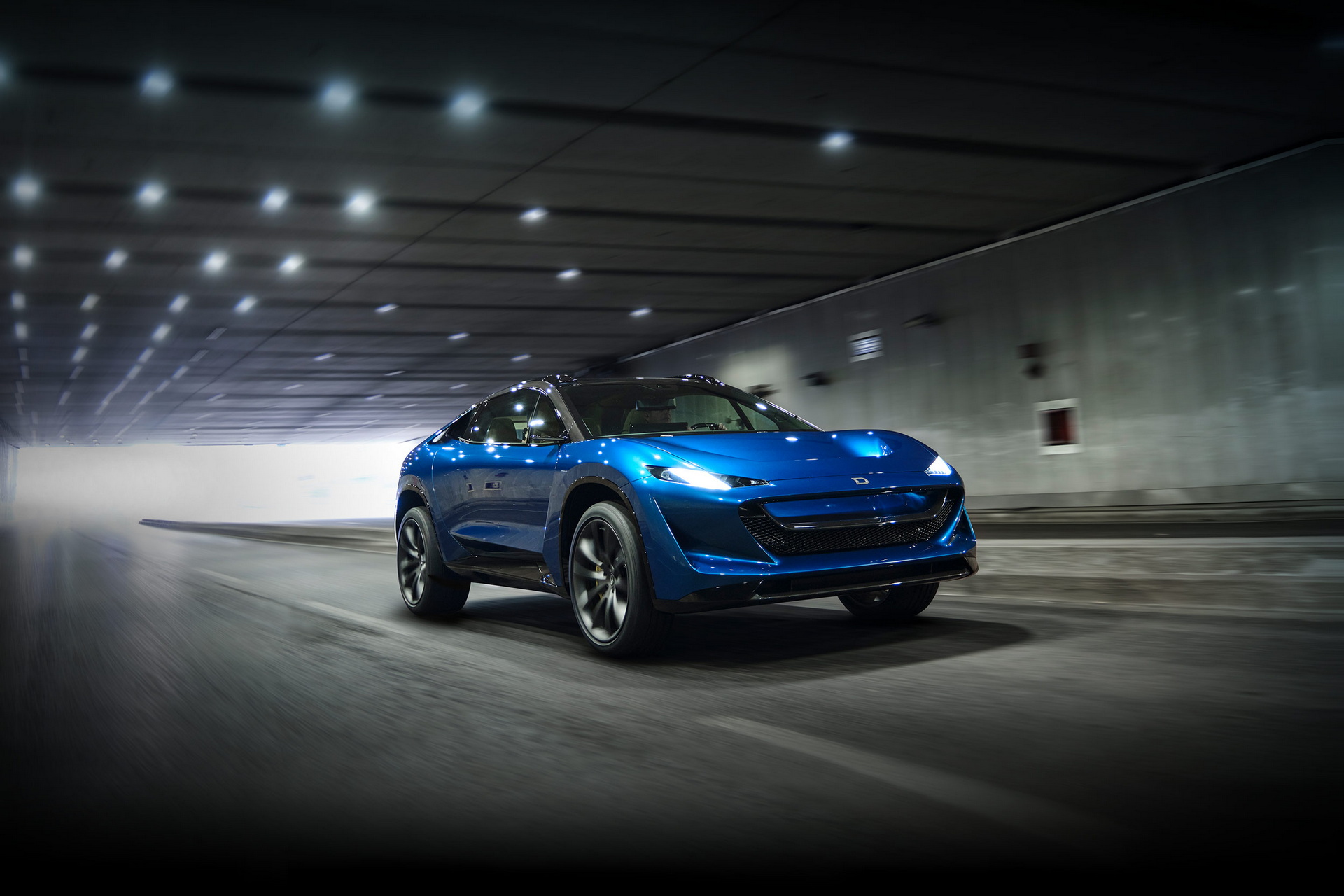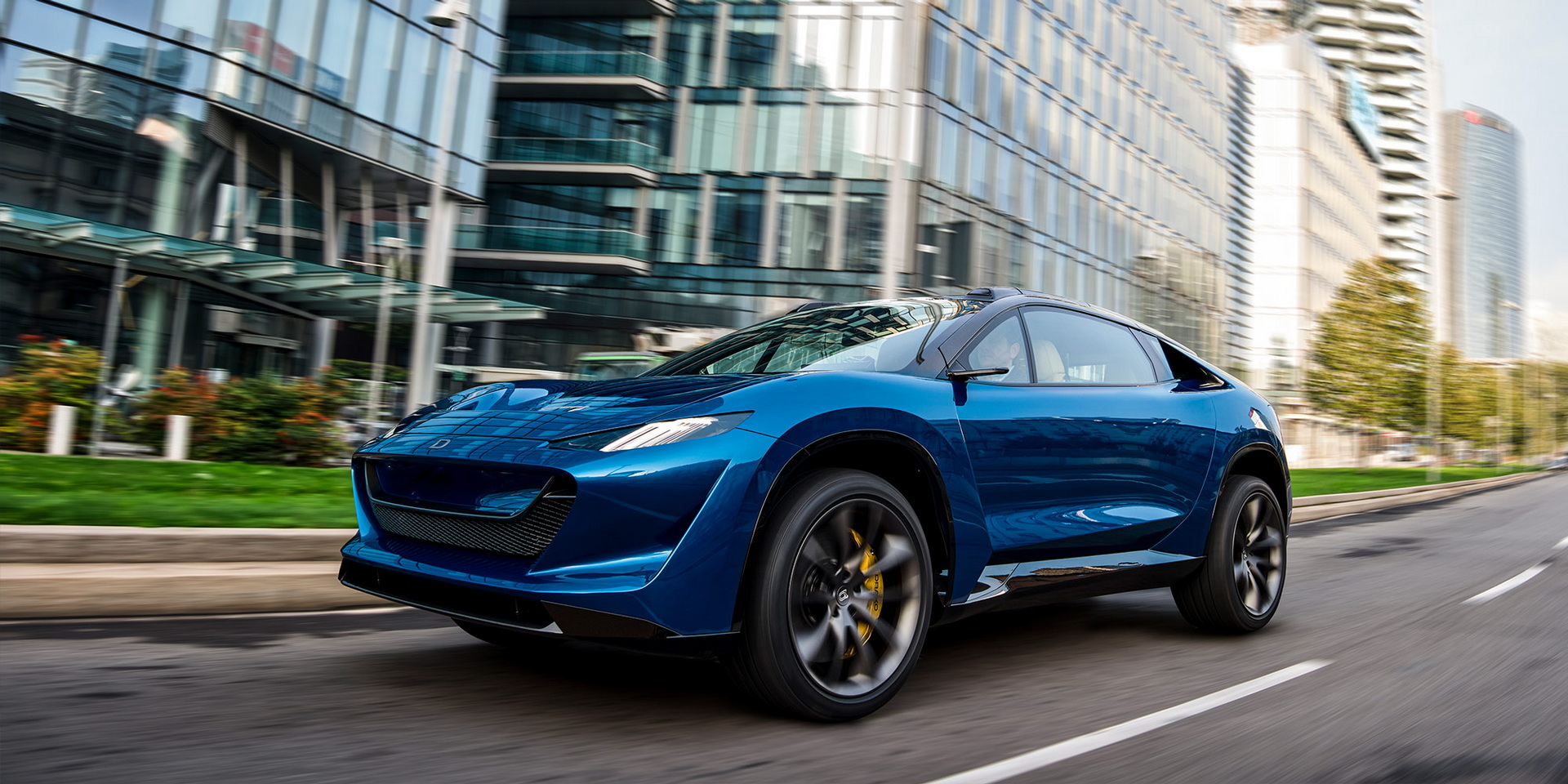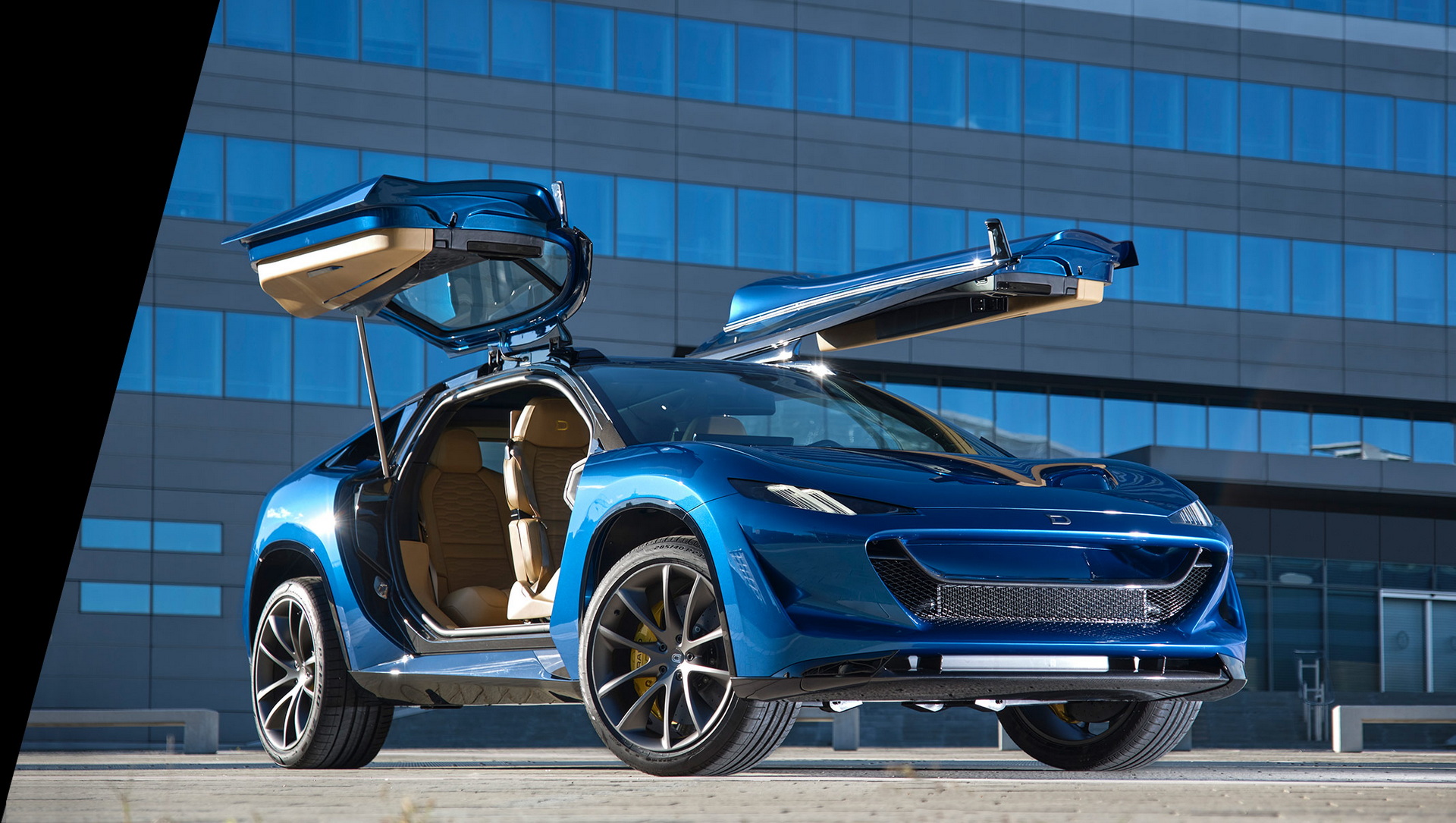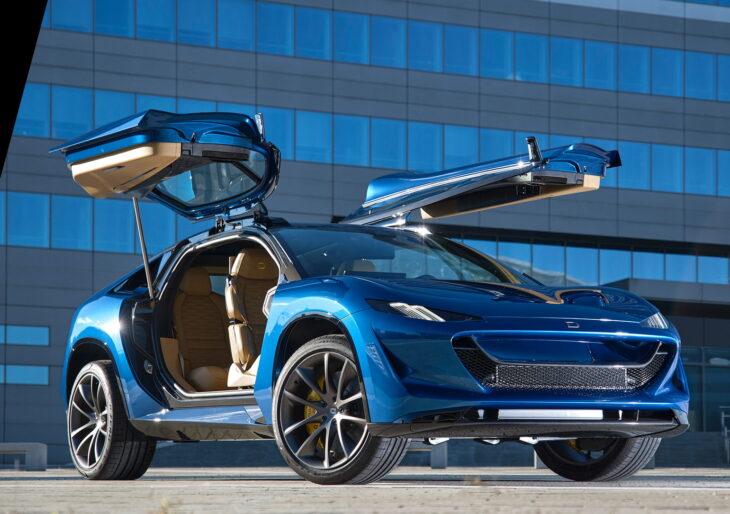The last time we heard from Bay Area EV exotics designer and builder Drako Motors, the company had just introduced the Pebble Beach crowd to its GTE, a 1,200-horsepower sport sedan with graceful good looks grounded in Ferrari and muscle car DNA. The GTE, which represented a decade of R&D and came with a $1.25 million price tag, featured a four-motor powertrain and a custom-designed torque vectoring system that compensated on the road more than 1,000 times per second.
Drako’s second offering for the electric supercar niche market is called the Dragon. The company announced the new model this autumn, and a quick look reveals not a new-gen GTE but a new body style which slots between SUV and crossover. Hunkered in shape but riding high on 23-inch wheels, the Dragon is nearer to a daily driver than the GTE, and with its base sticker price of $290K is positioned to compete directly with super-EVs of its ilk. It may also be hoping to entice those considering the Lamborghini Urus and Ferrari Purosangue, which start around $225K and $375K, respectively.
The Dragon’s design language is fascinating. Its front end suggests a wedge-shaped sports car; its roofline begins with a dramatically raked windscreen that rises to a calligraphic peak and slope and concludes abruptly with a concise lipped back end which the company has termed coda tronca, or ‘truncated tail’. It features gullwing doors and, fulfilling the car’s touring potential, a hatchback. Its aerodynamic design includes flying buttresses, but even without these unique airflow sentries the Dragon will be instantly recognizable on the road.
Other unusual design touches on the Dragon: the ultra-light rally lights subtly installed into the roof, the 10-piston front and 6-piston rear brakes with carbon-ceramic rotors, and a carbon fiber body. The Drako Dragon’s four-motor powertrain produces 2,000 horsepower, and it can apparently make the 0-60 run in 1.9 seconds, travel a quarter mile in 9, and reach a top speed of 200 MPH.
